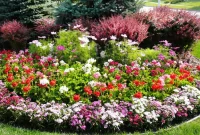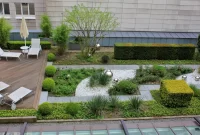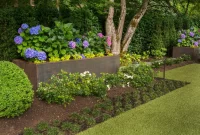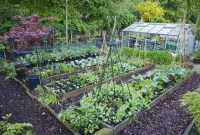Healing Gardens: Creating a Space for Wellness and Relaxation
The Concept of Healing Gardens
Healing gardens have gained popularity as spaces that promote well-being and relaxation. These gardens are carefully designed to provide therapeutic benefits to their visitors, offering a peaceful environment that fosters healing on various levels.
One key aspect of healing gardens is their emphasis on nature. Incorporating elements such as lush greenery, beautiful flowers, and soothing water features, these spaces aim to reconnect individuals with the natural world. Research has shown that exposure to nature can reduce stress, lower blood pressure, and enhance overall mental health.
Healing gardens also prioritize sensory stimulation. They aim to engage the senses through the use of fragrant flowers, textured plants, and calming sounds of water or wind. This sensory experience helps to create a calming atmosphere that allows visitors to unwind, recharge, and escape the stresses of daily life.
Furthermore, healing gardens often incorporate elements that encourage physical activity and mindfulness. Walking paths, yoga spaces, and meditation areas are commonly found in these gardens, providing opportunities for exercise and self-reflection. These activities promote relaxation, improve mood, and enhance overall physical well-being.
Another important aspect of healing gardens is their accessibility. These spaces are designed to be inclusive for people of all ages and abilities. They often feature wheelchair accessibility, seating areas, and interactive elements to accommodate everyone and encourage interaction with the natural environment.
Overall, healing gardens serve as havens for wellness and relaxation. They offer visitors a tranquil escape from the demands of modern life while promoting physical, mental, and emotional healing. Whether it is a small backyard oasis or a large public park, the concept of healing gardens continues to positively impact the well-being of individuals around the world.
Selecting Plants for a Calming Atmosphere
When it comes to creating a healing garden that promotes wellness and relaxation, the right selection of plants plays a crucial role. By carefully choosing calming plants, you can transform your outdoor space into a peaceful sanctuary. Consider the following factors when selecting plants:
1. Aromatherapy Plants
Plants with soothing scents can have a profound impact on our mood and well-being. Lavender, chamomile, jasmine, and rosemary are excellent choices that can release calming aromas into the air.
2. Native Plants
Native plants are well-adapted to the local climate, making them low-maintenance and resilient. Incorporating native plants in your healing garden not only creates a sense of harmony with the environment but also reduces the need for excessive watering and chemical treatments.
3. Soft Colors
Colors have a psychological effect on our emotions. Opt for plants with soft, cool colors such as pastel blues, purples, and whites. These shades have a calming effect and can contribute to a serene atmosphere.
4. Texture and Form
Varying the texture and form of plants adds visual interest and natural beauty to your garden. Incorporate plants with different leaf shapes, sizes, and textures. Ornamental grasses, ferns, and succulents can create a visually appealing and calming ambiance.
5. Low Maintenance
Choose plants that are easy to care for and require minimal upkeep. This ensures that your healing garden remains a peaceful space without causing unnecessary stress or burden.
In conclusion, selecting the right plants is crucial for creating a calming atmosphere in your healing garden. By incorporating aromatherapy plants, native species, soft colors, varied textures, and low-maintenance options, you can design a space that promotes wellness and relaxation. Surrounding yourself with nature’s tranquility can significantly contribute to your overall well-being.
Designing for Privacy and Comfort
Creating a healing garden is all about designing a space that promotes wellness and relaxation. One important aspect to consider when designing such a space is privacy. Privacy allows individuals to feel comfortable and safe, creating an environment conducive to healing and relaxation.
There are several ways to incorporate privacy into a healing garden design. The use of natural features such as tall trees or hedges can create a sense of seclusion, shielding the garden from surrounding noise and distractions. Additionally, well-placed fences or walls can provide a physical barrier, further enhancing privacy and creating a cozy atmosphere.
Another crucial element in designing for privacy and comfort is the careful selection of seating areas and garden structures. Placing benches or seating areas strategically can ensure that individuals can enjoy the tranquility of the garden while feeling secluded from others. Likewise, a well-designed pergola or gazebo can offer a shaded retreat, enhancing privacy and creating a space for reflection and relaxation.
In addition to privacy, comfort is paramount in a healing garden. Comfortable seating options, such as cushioned chairs or recliners, facilitate relaxation and allow visitors to fully immerse themselves in the healing experience. Soft lighting fixtures or lanterns can also be incorporated to create a warm and inviting ambiance, enhancing overall comfort.
Lastly, the use of natural elements and materials plays a crucial role in creating a comfortable atmosphere. Incorporating plants with calming scents, such as lavender or chamomile, can contribute to relaxation and well-being. Utilizing natural textures, such as wood or stone, in the garden’s design can further enhance the connection to nature and evoke a sense of comfort.
Incorporating Elements of Water and Wind
A healing garden is a space intentionally designed to promote well-being and relaxation. One key aspect in creating such a space is incorporating elements of water and wind. These natural elements have a soothing effect on our senses and contribute to the overall healing ambiance.
Water features, such as fountains, ponds, or even small streams, can provide both visual and auditory pleasure. The mesmerizing sound of trickling water and the calming sight of ripples can help reduce stress and anxiety. Adding seating areas near water features allows individuals to fully immerse themselves in the tranquil environment.
Another important element to consider is wind. Gentle breezes can create a refreshing atmosphere and help increase air circulation in the garden. Incorporating wind chimes or wind sculptures adds a touch of whimsy and a soothing soundtrack to the space. Additionally, strategically placed plants and trees can act as natural wind barriers, providing privacy and shelter from stronger gusts.
When combined, water and wind elements can improve air quality, create a sense of calmness, and enhance the overall sensory experience of a healing garden. The sound of flowing water and rustling leaves, along with the natural scents carried by the wind, can evoke feelings of peace and serenity. This harmonious environment provides a sanctuary for relaxation, reflection, and revitalization.
Conclusion
In conclusion, healing gardens offer a sanctuary for individuals to find solace, improve their well-being, and promote relaxation. The carefully designed green spaces, abundant with nature’s elements, provide a harmonious environment that reduces stress and enhances mental and physical health. By creating these therapeutic spaces, we can foster a connection with nature and ultimately improve our overall quality of life.







